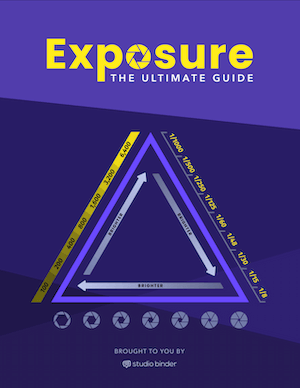Photography is an incredibly powerful medium that allows us to freeze moments in time, preserving them for generations to come. Photographers, with their ability to capture breathtaking landscapes, important historical moments, and candid portraits, play a vital role in shaping our culture and preserving our history.
Their work stands as a testament to their artistic prowess and profound impact on the world. Let’s take a closer look at the fascinating craft behind capturing those unforgettable moments.
What Does a Photographer Do?
First, let’s define photographer
While the role of a photographer can vary immensely, from the thrill-seeking photojournalist to the detail-obsessed product photographer, there are some defining features intrinsic to the craft that we can explore.
These constants serve as the pillars of a photographer's work, regardless of their chosen field or style.
So, what exactly is a photographer? Let's delve into the definition and uncover the enduring elements that make up this dynamic profession.
PHOTOGRAPHER DEFINITION
What is a photographer?
A photographer is a professional who uses their technical expertise, creativity, and composition skills to record and produce still images that tell a story or document an event. Photography can be a powerful form of visual communication, and photographers often strive to inspire, inform, or captivate their audience through their work. They may specialize in various genres, such as portrait, landscape, wildlife, or event photography, each requiring a unique set of skills and aesthetic sensibilities.
Photographers can work in a multitude of environments, from photographic studios and private events to dangerous war zones and undersea expeditions, depending on their specialism. Their tool of trade is typically a camera, but the art of photography extends far beyond the simple act of pressing the shutter. It encompasses a deep understanding of lighting, perspective, timing, and post-production processes.
Photographer Job Description
The Role of a Photographer
The role of a photographer extends beyond just taking pictures. They are responsible for a multitude of tasks, from meeting with clients and planning shoots to editing photos and marketing their work.
This video is a great insight into a day in the life of a professional photographer. Notice how much more there is to being a photographer besides solely shooting.
What Does a Photographer Do • Life of a Pro photographer
Let’s break down the responsibilities of a photographer. Here's a closer look at the day-to-day work and responsibilities of a photographer.
Pre-Production Planning
A photographer's day often begins with pre-production planning. This can involve meeting with clients to discuss their needs and expectations, scouting locations, or creating a shot list.
Shooting
The bulk of a photographer's day is typically spent on shooting. Depending on their specialty, this might involve setting up a studio for a fashion shoot, hiking into the wilderness for landscape photography, or attending an event to capture key moments.
Post-Production
After the shoot, photographers spend time in post-production, selecting the best images, and using software like Adobe Lightroom or Photoshop to enhance the photos.
Editing and Retouching
One of the main responsibilities of a photographer is editing and retouching photos to meet the client's specifications. This can involve adjusting colors, removing unwanted elements, and enhancing details.
In addition to actual production processes, there are many other responsibilities that photographers take on to keep the wheels of their business turning.
Client Meetings
Photographers meet with clients before a shoot to discuss the client's vision, negotiate rates, and plan the session. They may also present their work to potential clients.
Equipment Maintenance
Photographers are responsible for maintaining their equipment, including cameras, lenses, and lighting gear. This involves cleaning the equipment, checking for any issues, and ensuring everything is in working order.
Marketing and Business Management
For those running their own photography business, tasks also include marketing their services, managing finances, and handling administrative tasks such as scheduling shoots and communicating with clients.
Photography is a blend of both art and science, requiring a wide range of skills. From understanding the technical aspects of cameras such as the exposure triangle and lighting to having an artistic eye for composition, a photographer needs to master various elements to capture the perfect shot.
Photographer Skills
Technical Skills
First, let's dive into the technical skills required for photography. These include understanding how to operate a camera as well as exposing photos properly through an understanding of the exposure triangle.
For more, download our FREE E-book: Exposure: The Ultimate Guide.
Free downloadable bonus
FREE Download
Ultimate Guide to Exposure
The Exposure Triangle is something every photographer and cinematographer needs to master. Download our FREE e-book to get in-depth explanations and tutorials on topics like aperture, ISO, shutter speed, and how to balance these settings to nail perfect exposure every time.
A photographer must also have an in-depth knowledge of different lenses and their capabilities, as well as lighting techniques such as natural light, artificial light, or flash.
Understanding Aperture
One of the critical technical skills in photography involves understanding aperture. The aperture is the hole within the lens, through which light travels into the camera body. It's measured in f-stops; a smaller f-stop means more exposure, while a larger f-stop means less exposure.
Ultimate Guide to Camera Aperture • Subscribe on YouTube
Mastering ISO
ISO measures the sensitivity of your camera’s image sensor. A lower ISO setting makes the sensor less sensitive to light, resulting in a darker image, while a higher ISO setting increases the sensor’s sensitivity, leading to a brighter image.
However, a higher ISO can also result in more digital noise or film grain.
What is ISO • Subscribe on YouTube
Controlling Shutter Speed
Shutter speed plays a crucial role in creating well-exposed photos. It refers to the length of time the camera’s shutter is open. Faster shutter speeds freeze action, while slower shutter speeds create a motion blur.
What is Shutter Speed • Subscribe on YouTube
Knowing Lens Types
Different types of photography require different types of lenses. For instance, landscape photographers might prefer wide-angle lenses, while portrait photographers may opt for prime lenses with faster apertures.
Ultimate Guide to Camera Lenses • Subscribe on YouTube
Of course, technical know-how isn't all that makes a great photograph; in fact, it's simply the start. The true essence of photography lies in the ability of the photographer to tell a story, evoke emotions, and capture a moment in time that will never repeat itself.
Types of Photographers and Skills
Artistic Skills
Perhaps what separates a good photographer from an exceptional one is their artistic skills. Photography, like any art form, requires a keen eye for composition, framing, and storytelling through images.
Composition
Composition refers to how the elements in a photo are arranged. It's what draws a viewer’s eye into the image. Some popular rules of composition include the rule of thirds, leading lines, and symmetry.
Ultimate Guide to Film Composition • Subscribe on YouTube
Framing
Framing involves positioning the subject in a way that enhances it and draws attention to it. The frame needs not only to highlight the subject but also to provide context and depth to the image. While our video breakdown below focuses on cinema, the same theories apply to still photography.
Ultimate Guide to Camera Framing • Subscribe on YouTube
Understanding of Color and Form
A good photographer should have a solid understanding of colors and how they interact with each other. They should also understand how light can shape and give form to a subject.
WHAT DOES A PHOTOGRAPHER DO ON THE BUSINESS SIDE?
Business Skills
In addition to the technical and artistic skills, those who are pursuing photography as a career need to have a solid understanding of business principles. This video by Eric Floberg includes an interesting tidbit on the importance of business skills in making photography a career.
How to Make Photography Your Career
Marketing and Networking
Photographers need to know how to market their services effectively. This includes creating a professional portfolio, leveraging social media platforms, and networking with potential clients and other professionals in the field.
Pricing and Sales
Understanding how to price your work is vital. Photographers must consider the cost of their time, equipment, travel, and the value they provide when determining their prices. Additionally, they should be skilled in sales techniques to convince potential clients of their value and close deals.
Contracts and Negotiations
Professional photographers need to understand contracts and be comfortable negotiating terms with clients. This includes usage rights, payment terms, and deliverables.
Accounting and Taxes
Running a photography business also requires basic accounting skills, such as tracking income and expenses, sending invoices, and managing taxes.
Client Relationship Management
Photographers work closely with clients, so good communication and relationship management skills are essential. This includes responding promptly to inquiries, providing excellent customer service, and managing expectations.
By mastering both the art of photography and the business side of the industry, photographers can turn their passion into a successful profession.
Photography involves a blend of technical knowledge and artistic vision. By mastering these skills, photographers can create images that not only capture moments but also tell stories and evoke emotions.
Related Posts
Photography Genres
Types of Photographers
The field of photography is diverse, encompassing various genres each requiring unique skills, tools, and perspectives. The art of capturing a still image is used in countless industries and applications, leading to a wide range of specializations within the field.
Over time, photographers may develop their style and focus on specific types of photography. Let's explore some of the most common types of photographers.
Portrait Photographers
Portrait photographers capture images of individuals or groups, highlighting their subjects' personalities, moods, and features.
Skills and Tools: They require a good understanding of lighting techniques and composition, strong interpersonal skills, and often use prime lenses for their ability to produce sharp images with blurred backgrounds.
Famous Photographers: Annie Leibovitz, Richard Avedon

Annie Leibovitz • Queen Elizabeth II
Landscape Photographers
Landscape photographers capture natural environments in a way that brings viewers into the scene. Their work often involves travel and outdoor exploration.
Skills and Tools: They need strong composition skills, patience for the right lighting conditions, and typically use wide-angle lenses.
Famous Photographers: Ansel Adams, Galen Rowell
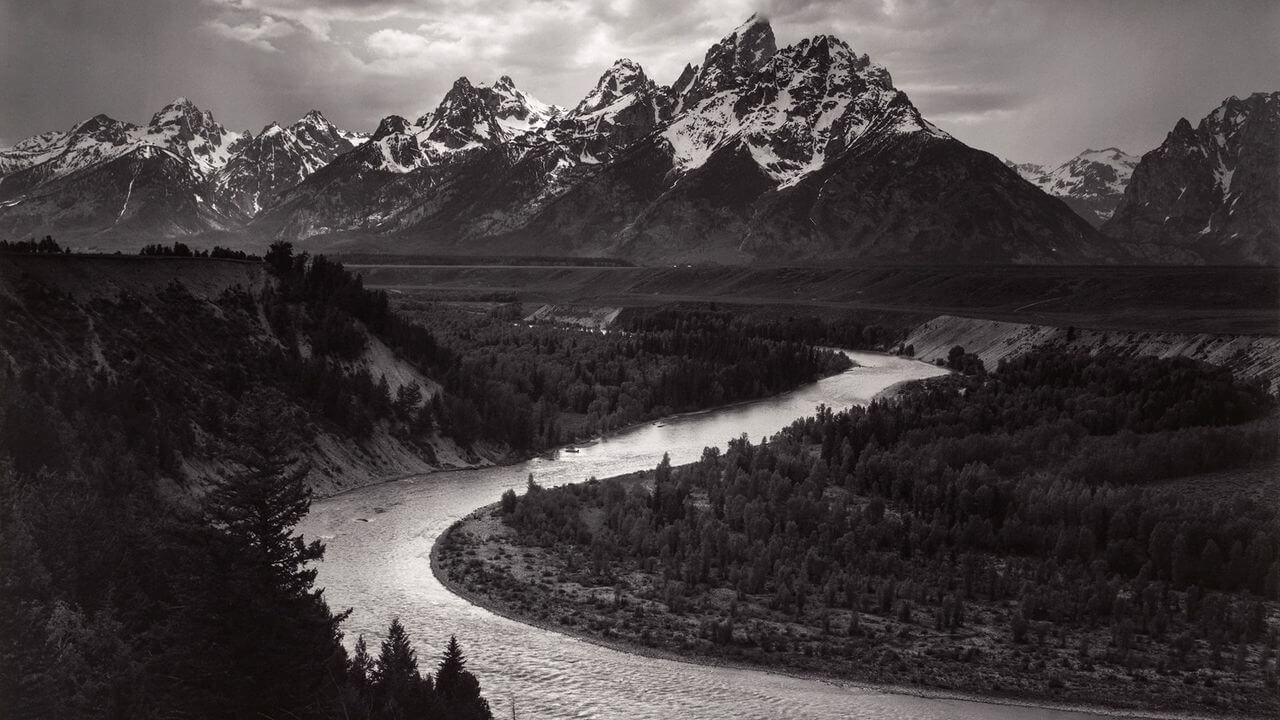
The Tetons and Snake River, Grand Teton National Park, Wyoming, 1942 by Ansel Adams
Sports Photographers
Sports photographers capture exciting and dynamic images of athletes in action at sporting events.
Skills and Tools: They need to anticipate action, have quick reflexes, and often use long telephoto lenses for close-ups from a distance.
Famous Photographers: Walter Iooss Jr., Neil Leifer
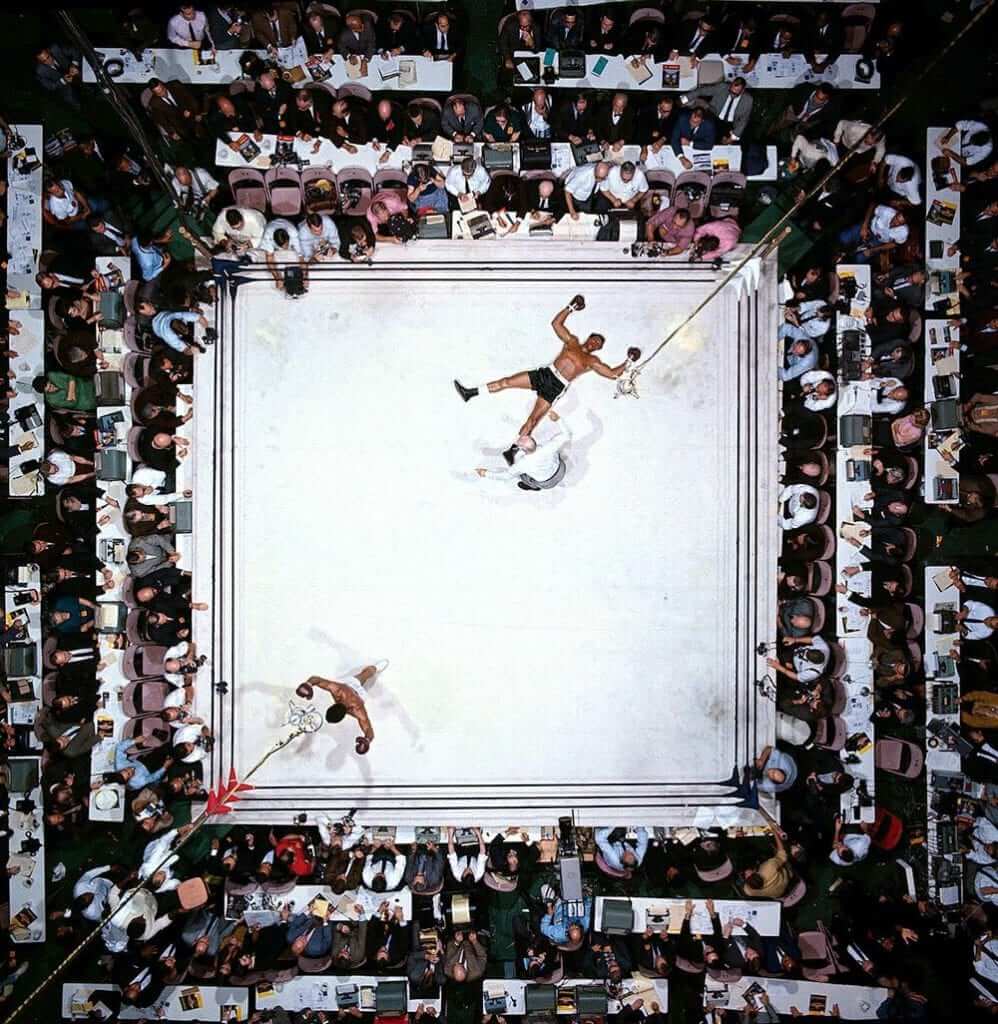
1966 World Heavyweight Title bout between Muhammad Ali and Cleveland William by Neil Leifer
Wildlife Photographers
Wildlife photographers capture animals in their natural habitats, often aiming to raise awareness about conservation issues.
Skills and Tools: They require patience, knowledge of animal behavior, and commonly use telephoto lenses to maintain a safe distance from their subjects.
Famous Photographers: Frans Lanting, Paul Nicklen

Photo by Frans Lanting
Fashion Photographers
Fashion photographers work on photoshoots for magazines, designers, and brands, capturing images that highlight clothing and accessories.
Skills and Tools: They need a keen sense of style, understanding of fashion trends, and often use controlled lighting setups in a studio.
Famous Photographers: Mario Testino, Annie Leibovitz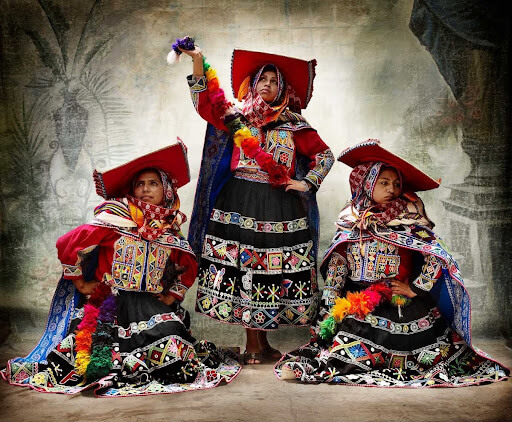
Alta Moda by Mario Testino
Event/Wedding Photographers
Event and wedding photographers capture the key moments of special events, providing memories for attendees.
Skills and Tools: They need to be adaptable, work well under pressure, and often use a variety of lenses to capture both wide-angle shots and close-ups.
Famous Photographers: Joe Buissink, Yervant Zanazanian
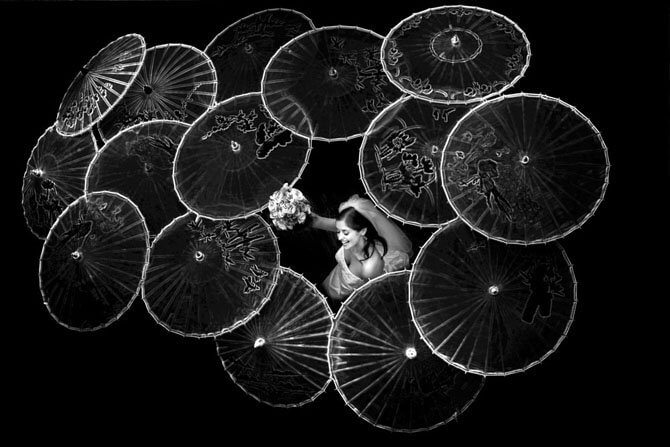
Photo by Yervant Zanazanian
Street Photographers
Street photographers document everyday life and society on the streets. Their work often tells a story or captures a decisive moment.
Skills and Tools: They require a keen eye for detail, quick reflexes, and often use small, unobtrusive cameras.
Famous Photographers: Henri Cartier-Bresson, Vivian Maier
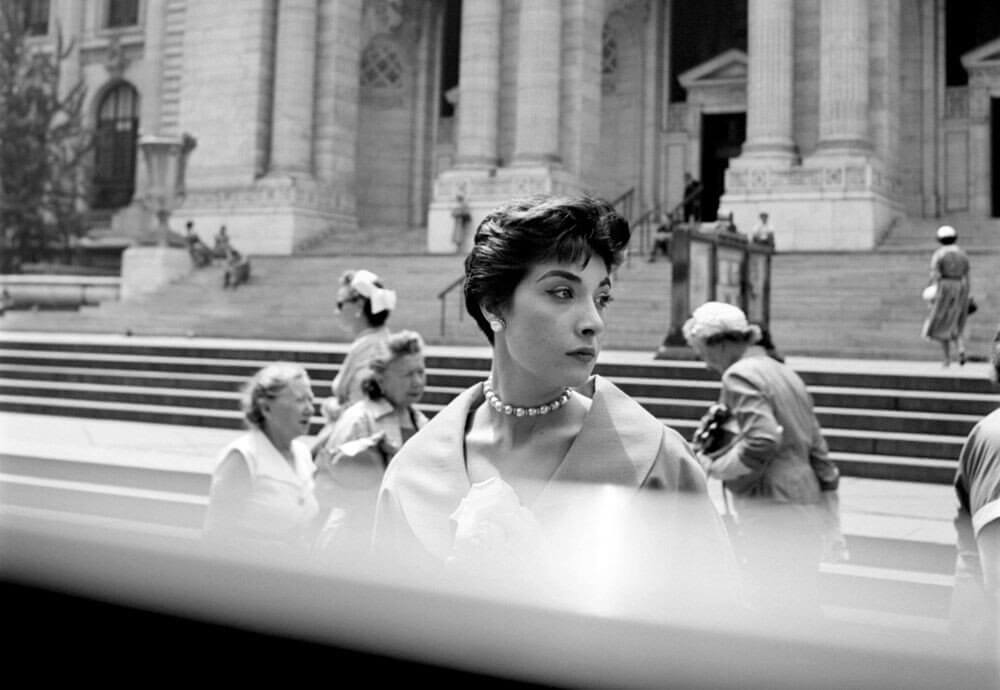
Photo by Vivian Maier
Documentary Photographers
Documentary photographers tell stories about the world and its people through a series of images. Their work often focuses on social, political, or environmental issues.
Skills and Tools: They need strong storytelling skills, empathy, and often use a variety of lenses to capture different perspectives.
Famous Photographers: Dorothea Lange, Sebastião Salgado

Dorothea Lange's 1939 photograph capturing The Arnold children in Michigan Hill, Washington
Food Photographers
Food photographers create appetizing images of food for cookbooks, magazines, advertisements, and menus.
Skills and Tools: They require a good understanding of lighting, attention to detail, and often use macro lenses for close-up shots.
Famous Photographers: David Loftus, Penny De Los Santos

Photo by Penny De Los Santos
Underwater Photographers
Underwater photographers capture images beneath the surface of bodies of water, ranging from oceans and seas to lakes and swimming pools.
Skills and Tools: They need scuba diving skills, a good understanding of underwater lighting, and use specialized underwater camera gear.
Famous Photographers: David Doubilet, Brian Skerry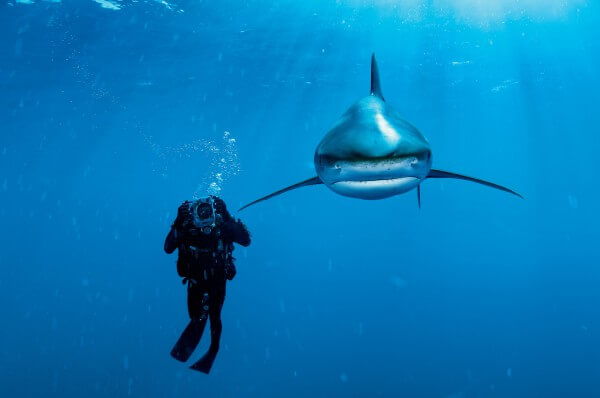
Photo by Brian Skerry
Aerial/Drone Photographers
Description: Aerial and drone photographers capture images from above, providing a unique perspective on landscapes, cityscapes, and events.
Skills and Tools: They require piloting skills for drones, a good understanding of laws and regulations related to drone use, and use drones equipped with high-quality cameras.
Famous Photographers: Vincent Laforet, George Steinmetz

Yunnan province, China by George Steinmetz
Photographers of all kinds bring their own special perspective to their work, using their skills and tools to capture captivating images in their chosen genre. If you're an aspiring photographer, you can explore these different types of photography to discover your passion and develop your own unique style.
Photographer Career
How to Become a Photographer
Becoming a professional photographer is about more than just getting a camera and snapping away. It's a journey that requires education, experience, and a constant thirst for learning and growth.
Educational Requirements
While a formal education is not strictly necessary to become a photographer, many professionals opt for courses or degree programs in photography or related fields. These programs provide a solid foundation of technical skills and knowledge, including understanding light, composition, color theory, and photo editing.
Gaining Experience and Building a Portfolio
Practical experience is crucial in photography. Start by shooting as much as possible to familiarize yourself with your camera and develop your style. Experiment with different types of photography to find what you enjoy most.
Building a strong portfolio is key to attracting clients or employers. Your portfolio should showcase your best work and reflect your unique style and skills. Consider including a variety of genres and techniques to demonstrate your versatility.
Networking and Continuous Learning
Networking is essential in the photography industry. Attend workshops, seminars, and photography events to connect with fellow photographers and potential clients. Participating in online photography communities can also be beneficial.
Continuous learning is a part of any photographer's career. Attend workshops, read photography books, and follow blogs and forums dedicated to photography.
Remember, becoming a photographer is an exciting journey that combines technical knowledge, practical experience, and interpersonal skills. It's all about continuously learning, honing your craft, and capturing the world through your lens.
What Does a Photographer Do And Why Are They Important?
The Importance of Photographers
In our visually-driven world, the role of the photographer is more important than ever. Photographers have the unique ability to capture moments and narratives, transforming ordinary scenes into extraordinary works of art.
They play an influential role in documenting history, shaping culture, and amplifying voices. Through their lens, we gain fresh perspectives and deeper understanding of the world around us.
Pursuing photography as a craft is not just about mastering the technical aspects, it's a continuous journey of creativity, discovery, and storytelling. It's about seeing the world differently and sharing that vision with others. This makes the art of photography a rewarding and vital pursuit, well worth the effort and dedication required to achieve mastery.
The beauty of photography lies in its endless possibilities - there are always new techniques to learn, new subjects to explore, and new stories to tell.
Up Next
Different Types of Camera Lenses
Understanding your tools is vital for photographers. One crucial aspect is knowing the different types of camera lenses and their unique capabilities, enabling photographers to capture images with accuracy and creativity.
Up Next: Different Types of Camera Lenses →
Showcase your vision with elegant shot lists and storyboards.
Create robust and customizable shot lists. Upload images to make storyboards and slideshows.
